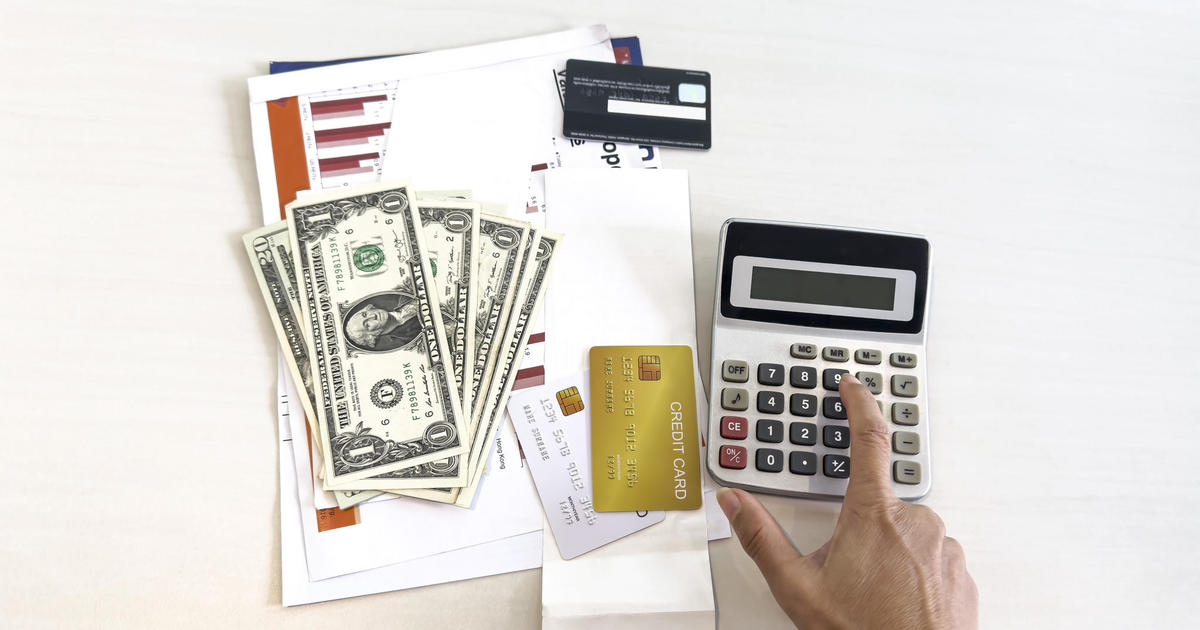Getty Images
Today’s high-rate landscape has made it tough to find affordable loans — and that’s true whether you’re trying to obtain a personal loan, a mortgage loan or any other type. But while borrowing costs are substantially higher across the board than they were just a few years ago, it’s credit cards, in particular, that have become incredibly costly.
At nearly 23%, the average credit card interest rate is almost twice as high as the average personal loan rate. And unlike personal loans, credit card interest compounds, meaning that the interest is charged on not just the principal but the interest the balance accrues over time. In turn, any balance you carry from month to month can balloon quickly, making it feel impossible to get ahead on what you owe.
It can be even tougher to tackle what you owe if you’re carrying a hefty balance, like $50,000 in credit card debt. Most people can’t afford to pay off that type of balance quickly, and the longer it sits, the harder it will be to pay off. That’s why it’s important to be proactive about paying off your credit cards now. But how long would it take to pay off a $50,000 credit card balance? Here, we’ll break down what to know.
Need help with your high-rate credit card debt? Find out what your best debt relief options are now.
How long will it take to pay off $50,000 in credit card debt?
Here’s what it would take to pay off a $50,000 credit card balance using different payment approaches at the current average rate of 22.76%:
The minimum payment approach
The minimum payment is typically around 1% of the balance plus interest. If you pay that amount each month, here’s what you can expect:
- Time to pay off: Approximately 42 years and 8 months
- Total interest paid: $95,178.93
- Total amount paid: $145,178.93
Paying 2.5% of the balance
If you pay 2.5% of the outstanding balance each month instead, here’s what you can expect:
- Time to pay off: Approximately 69 years and 5 months
- Total interest paid: $162,864.60
- Total amount paid: $212,864.60
Paying 5% of the balance
If you increase your payment to 5% of the outstanding balance each month, here’s what you can expect:
- Time to pay off: Approximately 15 years and 9 months
- Total interest paid: $30,976.51
- Total amount paid: $80,976.51
A fixed $1,500 monthly payment
If you commit to a monthly fixed payment amount of $1,500, here’s what you can expect:
- Time to pay off: Approximately 4 years and 4 months
- Total interest paid: $27,980.51
- Total amount paid: $77,980.51
A fixed $2,000 monthly payment
With a more aggressive fixed-payment approach of $2,000 per month, here’s what you can expect:
- Time to pay off: Approximately 2 years and 10 months
- Total interest paid: $17,498.79
- Total amount paid: $67,498.79
Explore your debt relief options and tackle your expensive credit card debt today.
What credit card debt relief options are worth considering?
If you’re facing such a substantial amount of credit card debt, it makes sense to explore all strategies available to you. Here are some debt relief strategies that may be worth considering:
- Debt consolidation: With this strategy, you take out a debt consolidation loan, typically with a lower interest rate, to pay off all your credit cards and consolidate multiple payments into a single monthly payment.
- Balance transfer: With a balance transfer, you move your current card balances to a new card with 0% intro APR. The interest-free period allows you to make more headway toward principal.
- Debt management: By enrolling in a debt management plan through a credit counseling agency, you may be able to lower the rates and fees on your credit cards and combine your payments into a single monthly payment.
- Debt settlement: With debt settlement (or debt forgiveness), the goal is to negotiate with your creditors to accept less than what’s owed. This could significantly reduce the amount you owe, making it easier and cheaper to pay off a hefty balance.
- Bankruptcy: Filing for either Chapter 7 (liquidation) or Chapter 13 (repayment plan) bankruptcy could help you restructure or get rid of what you owe on your credit cards. However, the credit implications are severe, so this is typically a last-resort option.
Each option outlined above has its pros and cons. The best choice typically depends on your specific financial situation, credit score and long-term goals. It may be beneficial to consult with a financial advisor or credit counselor to determine the most suitable approach for your circumstances.
The bottom line
Tackling $50,000 in credit card debt is a marathon, not a sprint. That amount of card debt is substantial, especially at today’s high rates, and getting rid of it requires patience, discipline and a solid strategy. The good news is, though, that there are many debt relief options to choose from — in addition to the traditional payoff methods. So do your research, commit to a plan and then stay the course. Otherwise, your card debt will continue to grow over time, and if it does, you could find yourself in serious financial trouble down the road.
